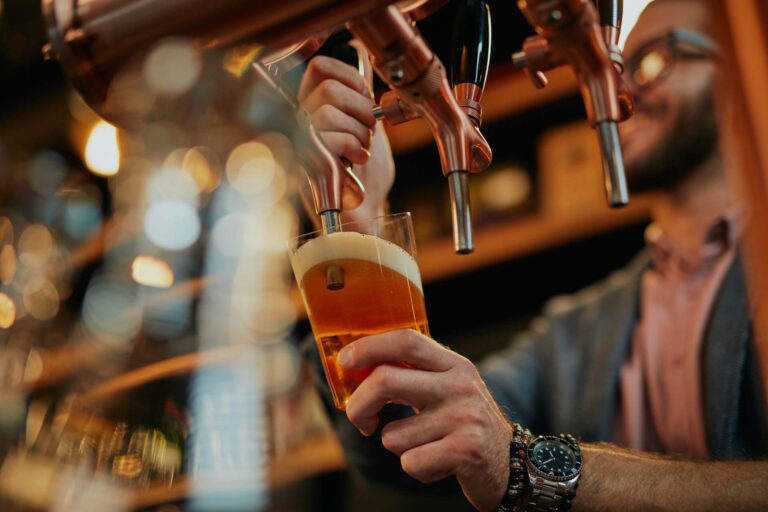10/07/2025
Lands of opportunity? Growth prospects persist in larger markets
Trading conditions are challenging in the US and China, but pockets of potential can still be found in segments as diverse as Tequila, premium beer and RTDs. Meanwhile, Canada’s tariff war with the US offers opportunities for local players and imports – while Spain’s resurgence is bucking the negative global wine trend.
The -1% dip in total beverage alcohol (TBA) volumes in 2024 was driven by soft performances from the industry’s two largest markets: TBA volumes were down -3% in the US, and fell by -5% in China, according to IWSR. All major categories reported declines in China; in the US, only RTDs bucked the negative trend with a flat performance.
Overall trends in both markets remain difficult – beset by political and economic uncertainty in the US, while China faces up to challenges related to the country’s real estate crisis, weakening economic growth and a rapidly ageing population.
But analysis from IWSR has unearthed a number of potentially lucrative growth opportunities in the years ahead – in China and the US, and also in the established markets of Canada and Spain.
The US: no-alc beer, Tequila, hard tea
While trading conditions in the US remain difficult, it accounts for the five biggest value growth opportunities among developed markets between 2024 and 2034, according to IWSR forecasts: cocktails and long drinks; no-alcohol beer; Tequila; US whiskey; and hard tea.
No-alcohol beer is set to add US$2bn in incremental value over the next five years. Volumes grew by +23% in 2024, and are expected to expand at a CAGR of +18% between 2024 and 2029, driven by wellness and moderation trends, plus innovation, more draught options in the on-trade, celebrity-endorsed brands and ecommerce opportunities.
Super-premium beer also shows promise: it was the only beer price tier to grow in 2024 (volumes up +2%), and is poised to expand at a CAGR of +4% to 2029, against a projected CAGR contraction of -3% for beer as a whole.
Agave spirits are a category in transition, becoming more competitive and value-conscious, with consumers increasingly demanding authenticity, product integrity and balanced pricing.
While the category is expected to grow at a CAGR of +1% between 2024 and 2029, the premium price tier is forecast to expand at a CAGR of +6% – versus a projected CAGR decline of -7% for super-premium.
“In this new phase of more measured growth for Tequila, focused on premium price points, reposado has emerged as a clear winner, delivering strong growth due to its approachable price point and smooth taste profile,” says Marten Lodewijks, President IWSR US.
In the dynamic RTD category, hard tea has emerged as a standout, with volumes up +31% in 2024 with RTDs as a whole growing +1%; between 2024 and 2029, hard tea is predicted to grow at a CAGR of +11%, with total RTDs set to rise at a CAGR of +1%.
“More premium, spirit-based hard tea offerings blend the appeal of classic iced tea with the sophistication of real spirits, attracting consumers seeking flavourful, lower-ABV options,” explains Lodewijks.
China: premium beer, home-grown wine, imported white spirits
Premium beer was the only beer price band to register growth during 2024 in China, expanding volumes by +1% as total beer fell back by -5%. It is expected to grow at a CAGR of less than 1% between 2024 and 2029, with overall beer flat.
“Although consumers in China are now drinking less beer, they are looking for quality, which has led to rapid premiumisation,” explains Shirley Zhu, Research Director China. “This has been driven by local brewers releasing premium lines and locally-produced foreign brands.”
Projected growth for premium and super-premium wine comes against a backdrop of long-term category decline: China’s wine market is expected to shrink at a CAGR of -2% between 2024 and 2029, but the premium and super-premium price bands are forecast to expand at CAGRs of +1% and +3% respectively, spearheaded by increased interest in higher-quality local wines, particularly from the Ningxia region.
A move away from dark spirits as consumers embrace casual drinking and cocktails has benefitted imported white spirits. Gin volumes grew by +20% during 2024, while vodka was up +4%. IWSR forecasts predict 2024-29 CAGRs of +5% for gin and +4% for vodka.
“The landscape of China’s TBA market has started to change as consumers demand different drink options for varied occasions, and it will look very different in a few years,” says Zhu. “Brands and distributors will need to work extra hard to gain, or even maintain, their market positions. However, continued growth of the middle class, and more confidence in that group about their finances, will support a sustainable recovery in the medium to long term.”
Canada: tariff opportunity
As consumers turn their backs on US products thanks to the political and economic turmoil sparked by President Trump’s tariff announcements, that could open up opportunities for domestic brand owners and non-US imports.
According to IWSR consumer research, Bevtrac, conducted in May 2025 among LDA adults in Canada, 69% said they had stopped buying US alcohol products, with 67% saying they were very unlikely to do so in the future.
“It’s too early to tell to what extent this sentiment translates into consumer behaviour following the tariff announcement,” says Richard Halstead, Chief Operating Officer Consumer Insights. “But continued negative consumer sentiment towards US products is expected to linger until at least the 2028 US elections, with American whiskey and wine most impacted.”
IWSR forecasts suggest that US wine volumes in Canada will drop by -82% in 2025 before slowly rebuilding. Meanwhile, US spirits – which grew by +4% in 2024 – are expected to fall by -81% this year. Local wine volumes are predicted by grow by +9% in 2025, with local spirits up by +6%.
“Domestic products which substitute for US imports, especially Canadian whisky, are likely to benefit most from the boycott,” says Halstead. “Other substitutes, such as Scotch whisky and Australian and French wine, also stand to benefit.”
Spain: premium beer, wine resurgence
Spain is one of a number of markets where premium-plus beer growth has accelerated, with more affluent drinkers driving a comeback for the segment, also boosted by rising tourism and a move towards daytime and lower-ABV drinking.
While total beer volumes in Spain were flat in 2024 – and are predicted to grow at a volume CAGR of less than 1% through to 2029 – premium beer grew by +3% last year, and is expected to expand at a CAGR of +2% between 2024 and 2029.
“Investment and innovation into new brands and styles has fomented fast-paced premiumisation, allowing beer to penetrate occasions in which it previously struggled, such as the night on-trade,” explains Emily Neill, Chief Operating Officer Research.
Another strong performer is still wine, which has benefitted from the growth in lower-tempo, food-oriented occasions, as well as downtrading to products striking the right balance between price and quality.
Still wine volumes are expected to grow at a CAGR of +1% between 2024 and 2029, after recording growth of +3% in 2024. Growth for white wine was even more marked last year, with volumes up +5%.
“White wine will continue to underline overall category development going forward, as it brings in new consumers and penetrates a broader range of occasions,” says Neill. “Investment into white wine-producing regions and grapes is already reaching unprecedented levels.”
The above analysis reflects IWSR data from the 2025 data release. For more in-depth data and current analysis, please get in touch.
CATEGORY: All | MARKET: Asia Pacific, Europe, North America |
Interested?
If you’re interested in learning more about our products or solutions, feel free to contact us and a member of our team will get in touch with you.




